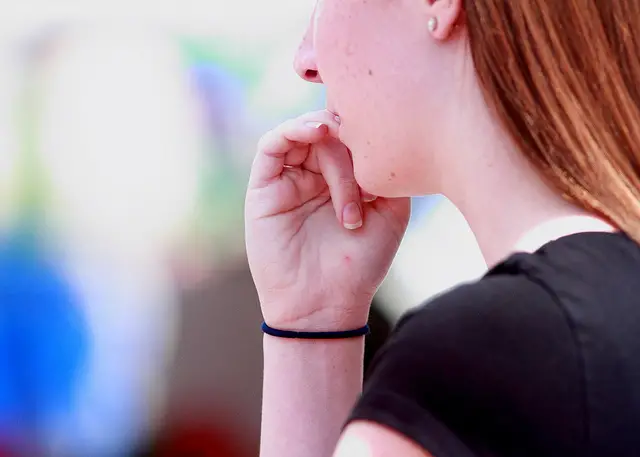John shares this latest news on behalf of the CQC. Ed
The report of the first phase of a Government-commissioned review of mental health services for children and young people in England has been officially released today (Friday 27 October).
The report is the first phase of a major thematic review requested by the Prime Minister in January 2017. CQC has drawn on existing reports, research and other evidence and its inspections of children and young people’s mental health services, as well as conversations with young people to identify the strengths and weaknesses of the current system.
Fragmented system
The report confirms many of the issues raised in the Five Year Forward View for Mental Health published in 2016 and in particular, comments on the difficulties children and young people face in accessing appropriate support for their mental health concerns from a system that is fragmented and where services vary in quality.
During phase two of the thematic review, CQC will undertake fieldwork to identify what helps local services to achieve, or hinders them from achieving, improvements in the quality of mental health services for children and young people, as set out in the NHS’s Five Year Forward View for Mental Health.
18 month wait for mental health services
CQC has found that, whilst most specialist services provide good quality care, too many young people find it difficult to access services and so, do not receive the care that they need when they need it.
One young person told CQC that they waited 18 months to receive help. Public Health England estimates that only 25% of children and young people who need treatment for a mental health problem are able to access it. The Royal College of Psychiatrists has noted difficulties in finding specialist inpatient beds close to a young person’s home.
Inspectors’ ratings
CQC has rated 39% (26 services) of specialist community child and adolescent mental health services (CAMHS) as requires improvement and 2% (1 service) as inadequate against CQC’s ‘responsive’ key question, which looks at whether people access care and treatment in a timely way.
The problem of gaining access to specialist help is contributed to and compounded by the fact that those who work with children and young people (in schools, GP practices and A&E, for example) do not always have the skills or capacity to identify or support the mental health needs of children and young people.
Users struggle to understand service
When concerns are identified, children and young people, and their families, often struggle to navigate the complicated and fractured system of services created by a lack of joined-up working.
Many organisations are involved in planning, funding, commissioning, providing and overseeing support and care for young people with mental health problems. Poor collaboration and communication between these agencies can lead to fragmented care, create inefficiencies in the system, and impede efforts to improve the quality of care.
Considerable variation in the quality of care
When young people are able to access specialist services, they can often expect to receive good quality care. CQC has rated 59% of specialist community services as good and 9% as outstanding, and 73% of specialist inpatient services as good and 7% as outstanding.
There is, however, considerable variation in the quality of care between specialist CAMHS services. Safety is a significant area of concern. CQC has rated 5% (3 services) of specialist inpatient services and 3% (2 services) of specialist community services as inadequate for safety, and 30% (18 services) of specialist inpatient services and 39% (26 services) of specialist community services as requires improvement for safety.
Must make sure young people supported
Speaking about the report, Dr Paul Lelliott, Deputy Chief Inspector (lead for Mental Health) said:
“This review has given CQC an important opportunity to not only consider the quality of care as found in our inspections, but also take a step back and look at the system as a whole.
“We have listened to children and young people who have used services so that we can better understand the strengths, weaknesses, barriers and bridges to care they have experienced. We will now take their voices into the next phase of this work, so that we can make effective recommendations for an improved system.
“There are many people out there working to make sure that children and young people who experience mental health issues are offered caring support. Their dedication is to be celebrated. However, we must also address those times when a child or young person feels let down or not listened to and make sure the same level of support is available to each and every one of them.
“The commissioning of this review indicates that the Government considers children and young people’s mental health to be a national priority. The Five Year Forward View for Mental Health sets out plans to improve access to high quality care close to home and more money has been allocated to develop these vital services. The complexity and fragmentation of the system is an obstacle that must be overcome if this new investment is to result in better services to meet the mental health needs of children and young people.”
How the data will be used
The findings in CQC’s phase one report will inform the Government’s Green Paper on children and young people’s mental health, expected before the end of the calendar year.
By providing an assessment of the system, this report also lays the foundations for the next phase of CQC’s review. Phase two will seek to identify where has there been real change in the system, where change has been slower and what was needed to drive better care.
CQC will carry out fieldwork to observe care where appropriate, speak to staff and also commissioners. Following this, CQC will make full recommendations to encourage improvement in the mental health system for children and young when we publish our thematic review in March 2018.
The report





